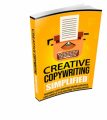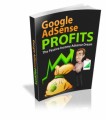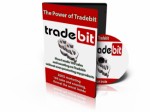Sample Content Preview
CAMPAIGNS
What It Is? Advertising through the PPC method allows you as a business owner to place ads with keyword usage within search engine result pages, of course, for a price. The goal of PPC is to help website business owners attract targeted customers. Target customers are those that are already looking for your product offerings or the similar; this helps you by putting your ads and business in front of those who are most likely potential buyers. The goal of PPC methods of advertising is to provide you, the site owner, to control your budget while still gaining maximum site exposure.
Understand, you do not pay for the placement of your ad; instead, you pay once a potential customer clicks on your ad and goes onto your website. The amount you pay for that customer has already been agreed to through a bidding system. It is imperative to your site’s success to appreciate that you are paying each and every time your link is hit and your landing page is accessed – remember your budget!
When first starting out with your PPC campaign you must keep an eye on your budget and be prepared to spend a bit more during your first few weeks while you learn the system. Once you have your funds ready, it is time to determine your keywords. Make sure you properly research not only the best keywords or keyword phrases, but also the value of those words in terms of competition. Move onto creating your ad and creating an account and before you know it, you will have plenty of data to help you steer your efforts.
Often times, third-party companies allow for ads from search engines to be placed on their site; these are often referred to as a content network property. This is a benefit for all involved; especially considering it is not often in life you get a situation is win-win-win. See, the third-party gets a portion of the revenue paid by you the advertiser. In fact, they can earn upwards of eighty percent. Consider when you have searched for an item or information on the web and landed on a website full of information; remember the ads that are on the page? These ads usually have something in common and complementary with the item or information you sought.
It is not uncommon for consumers to ignore the ads on the content network and this place is not nearly as valued as listing high on the search engine results page. When your ads appear on a content network property, do not be concerned – your ad is still being seen! In fact, your ad is being displayed and seen along side similar or complementary information to your product. Now, there may not be a high click through rate, but these searchers will most likely resemble your target audience and therefore, resemble your customers.
TYPES OF PPC
There are mainly two different types of PPC, flat rate and bid-based.
Flat-rate
Flat rate is an excellent option, especially if you are selling prod-ucts at great prices. This is often the option selected by those who have a need to show-up in the comparison shopping results page. On these types of search engines, customers are highly targeted along with the choice of product with minimal rates.
Remember, you can always pay more for higher ranking, but you may find you do not need to after gathering some baseline data for comparison. Question if paying more will actually gain you any more attention than the current or if changing your ad would prove wiser.
If you decide that you want to change your ad or even pay more for a higher level of exposure, check to see if that site uses rate cards. Rate cards have a fixed amount due per click but are according to the possible areas available as advertising space. Now, do not assume you are restricted to those prices only; no, you can negotiate if you are offering the search engine owners a long-term and valuable contract.
BID-BASED
Bid-based provides you the buyer lots of opportunity to control your budget; this type of PPC is like an auction for advertisers. Each PPC client informs the networks how much they are willing to pay to rank higher on the search engine results page – you set the maximum amount you are willing to pay and compete against other advertisers. The competition is conducted as an auction and each advertiser bids for the spot and you dropout when the bid has become too high for your budget. Often there are several spots open and this is often dependent on keyword. When there are several spots, they will be put in value order of the bid and perhaps ad quality – make great ads!
BUDGETS & Bids
You will have to determine what your max rate will be when using PPC; when making this determination remember to consider that the web is open 24 hours a day 365 days a year. If you do not take the prior into consideration, you will find that PPC can get very expensive really quick. While you try to make this economically tough decision, try Yahoo’s Estimator Tool. This tool will help you develop and calculate possible budgets and is very useful in judging how much money you will spend to take on your competitors and if it will be worth it. Overall, you want to spend enough to grow into the top five spots in the search engine results page.
You will also have to consider the value of your bid in terms of keywords. Some keywords are worth more than others are; in fact, some of the most popular keywords will prove almost impossible to afford. The affordability of a keyword has much to do with the finan-cial power of your competitors, especially national brands. In these situations, you may want to look for keywords that are very specific so that when your ad does get clicked on your chances of conversion is greater.
PREPARING Your Ad
When preparing your ad, make sure you consider your audience. Take the time to learn their language, their hobbies, their hangouts, and their demographics; doing this will provide with a great deal of knowledge. This knowledge will gear your ad in the right direction to create eye-catching ads that get attention that leads to conversions.
Do not forget to make your ad and landing page cohesive so searchers know they have landed at the right place. Additionally, make sure the ad links to the information that the potential customer is seeking or your bounce rate will be higher than you desire.
Other Details- 1 Ebook (PDF), 37 Pages
- 1 Salespage (TXT)
- 5 Ecovers (PNG)
- Year Released/Circulated: 2020
- File Size: 3,685 KB
License Details:
[YES] Can be sold
[YES] Can be used for personal use
[YES] Can convey and sell Personal Use Rights
[YES] Can convey and sell Resale Rights
[YES] Can convey and sell Master Resale Rights
[YES] Can be packaged with other products
[YES] Can modify/change the sales letter
[YES] Can put your name on the sales letter
[YES] Can be added into paid membership websites
[YES] Can be offered as a bonus
[YES] Can be used to build a list
[YES] Can print/publish offline
[NO] Can be given away for free (must get at least an email)
[NO] Can be added to free membership websites
[NO] Can convey and sell Private Label Rights














